Originally, I was going to find and buy a piano through Craig's list, take the company truck and a few helping hands to heft the 600lb beast into the truck, take it to work, pull out the keyboard, the hammer assembly and the harp (which ways 200-300lb all by it self) with the crane at my work, somehow dispose of the assemblies, then transport the piano case to my house again, with more helping hands.
Well, beyond the obvious "what a pain in the rear", there are also problems like that in removing the harp, there are somewhere around 7-9 tons of force across the harp - if it breaks, people get hurt. To remove the harp, you need to de-string it. If you do it in the wrong order, the harp breaks. If a string breaks, it's like a flail.
I started thinking my way through and in searching on Craig's List, found an interesting ad that read "If you don't want your piano any more, we'll remove it free". I immediately groked that they were doing restorations and reselling the pianos... Hum...
So e-mailed and got in touch with a really nice and piano knowledgeable fellow named Aaron, who found a suitable piano which they would then pull the guts out of, and deliver the piano. POOF! problem solved! Ok, at least some of the problem...
The piano - in it's original glory. Keys were damaged and would have needed significant restoration, which made me feel better about tearing it apart. It was probably from the 1920s.
The harp and keys, with the hammer assembly removed.
The gutted piano with panels and key cover removed (below)
Key cover, bottom cover plate and top cover plate.
Removing the keyboard plate. My keyboard was too thick, so I had to router out 3/4" of the plate to make it fit in. Two hours later...
Routing out the cutout on the keyboard plate. About half way through the multi hour process.
Mounting the LCD for the computer to the back of the piano, where the Harp used to be. This is the hardest, most dense wood I've ever worked with. Harder than some metals for sure...
In order to fit the speakers in each side, I had to remove many of the tuning pins. These are amazing little pieces of steel - tiny little threads, like 60 threads per inch or more, and threaded into the very hard wood in the back. The first pin I took out by hand, and it took over 5 minutes. I needed to remove like 50 of them so quickly figured out how to mechanize... Ended up using a pair of bits back to back, with the 1/4" drive being the "socket end" to pull these suckers out.
To fit the key cover over the keyboard, I had to router out a few compartments for the knobs and sliders that sat up on top of the keyboard.
The "almost" finished music workstation in a piano all closed up above.A pair of detail shots, showing the music keyboard, the computer keyboard, the speakers, LCD and mixer. I still need to finish reconfiguring the pedals. I already have the left one toggling the power to the keyboard and amp, but need to finish up the sustain and volume pedal mods. Otherwise, it's a pretty nice little setup! For normal use just playing as an instrument, I don't need to flip the front panel up at all - just kick the power switch. I only need to lift the panel if I'm recording or mixing stuff.
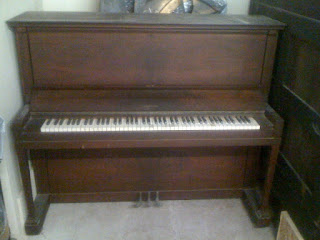
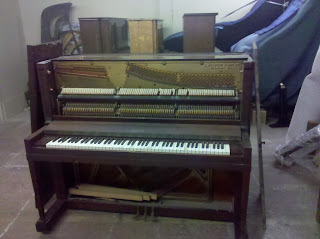
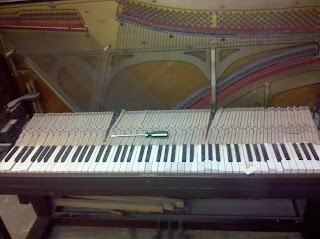
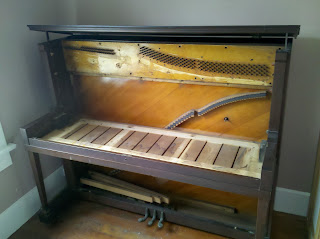
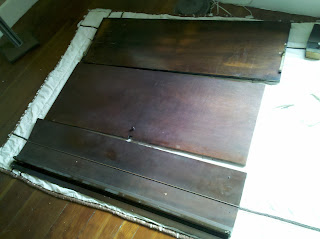

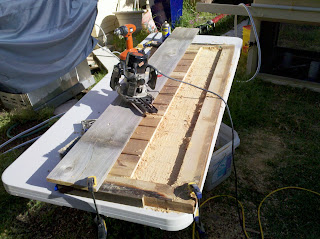
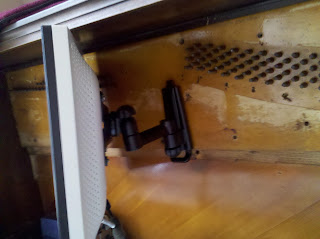


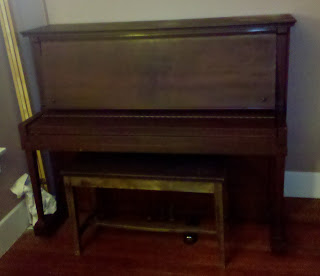
No comments:
Post a Comment